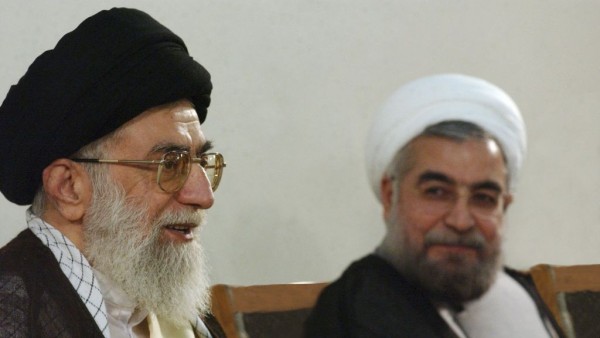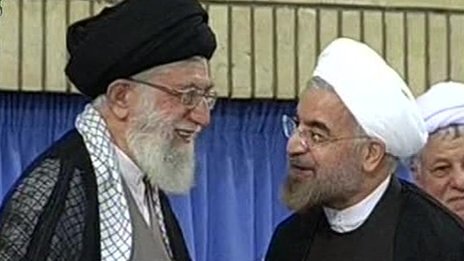
By James Poulos *
The challenge posed to the United States by Iran is so difficult and complex a problem that even the Trump administration is somewhat divided on how to proceed. While some officials are inclined to treat Tehran as if it is in compliance with the terms of the nuclear “deal” struck under Obama and still in effect, others, including Trump himself, believe the spirit of the agreement has been cast aside, and doubt it ever should have been put in place to begin with.
No matter the gravity of the situation within Iran, however, an even more immediate concern is what the mullahs are doing to worsen America’s strategic situation through conventional, not nuclear, arms. As our Mideast allies have warned in the past, the progressive destruction of ISIS has opened a potentially powerful power vacuum into which Iran and its own allies, including top international terror group Hezbollah, can quickly flow. Despite disagreement over how best to tackle the nuclear dimension of Iran’s aims, officials ought to agree on a concerted response to events on the ground.
Iran has long coveted a land bridge to Lebanese Hezbollah and the Assad regime in Syria. Not only would the connection instantly elevate its strategic position against its Arab rivals, driving a wedge between them and Turkey. It would also provide a secure and capacious corridor for flowing arms and materiel against Israel — making life more difficult for cornerstone Sunni states like Egypt, Jordan and Saudi Arabia that have moved toward greater reconciliation with the Jewish state. Finally, the geopolitical change would at last remove one of Iran’s old threats from the chessboard: Iraq, the majority-Shiite Arab nation that has flipped since Saddam from implacable enemy to tacit, or more than tacit, ally.
In sum, across the Mideast, wherever the United States wants to preserve the status quo, Iran wants to upset it, and wherever the United States wants something to change, Iran wants it to deepen.
There is, of course, the lone exception of the destruction of ISIS.
“Most non-ISIS powers — including Shia Iran and the leading Sunni states — agree on the need to destroy it,” as Henry Kissinger recently wrote in a sort of public memo to the White House. “But which entity is supposed to inherit its territory? A coalition of Sunnis? Or a sphere of influence dominated by Iran? The answer is elusive because Russia and the NATO countries support opposing factions. If the ISIS territory is occupied by Iran’s Revolutionary Guards or Shia forces trained and directed by it, the result could be a territorial belt reaching from Tehran to Beirut, which could mark the emergence of an Iranian radical empire.”
Such an imperial arrangement would hark back to the polyglot entities that have traded supremacy over the course of Mideast history, from the Ottoman Empire back to the Romans, with various weaker groups and movements exercising some degree of local autonomy and control, but all, in effect, willingly taking orders from Tehran.
In fact, this pattern has already begun taking shape to a sobering extent. Several regional militias under the supervision of Iran’s Revolutionary Guard militias are currently designated by the United States as terror organizations.
“But there at least 40 militias that are not,” as the Foundation for the Defense of Democracies has observed. “Many are Iraqi-based groups, and include Afghans, Pakistanis, and Syrians. The numbers are in the tens of thousands.” It’s believed that over 60,000 Iraqis, and 10,000 foreign nationals in Syria, are supplied, supported or controlled by the Guard. Without countervailing force of some kind, those numbers will steeply rise.
There’s also little doubt as to what sort of missions Iran’s satellite armies will be tasked with: doing Iran’s dirty work in ways that save Tehran itself from having to bear the risks and costs of a formal conventional war with the United States and its allies.
“The Guard Corps may attempt to expand its asymmetric strategy while falling below the threshold of a direct attack,” as FDD surmised. “During the wars of Iraq and Afghanistan, the Revolutionary Guard provided material assistance to militants targeting American soldiers and in Iraq directly oversaw attacks. It continues to harass the U.S. Navy in the Persian Gulf on a frequent basis. Between May and June, Guard-led militants and Iranian drones challenged a U.S. deconfliction zone near Tanf, Syria, triggering American strikes.”
To be clear, the United States also rightly wants to avoid striking up a conventional regional war with Iran, which would promise even greater cost and devastation than a creeping Shiite empire. There is some hope of working outside angles with greater powers that also hold a stake in Mideast outcomes.
Kissinger, for his part, suggests that “Russia’s attitude” toward the fate of formerly ISIS-held lands “will be a key test” of which way the sands will shift. But even that notion quietly reminds us that the United States must worry about how to proceed in the absence of sufficient diplomatic leverage over Moscow.
The options are few. Turkey, despite its harrowing turn into anti-democratic autocracy, remains a NATO ally with a large army and a tradition of acting as a bulwark against revisionist powers to its southeast. The Kurds, though longtime enemies of the Turks, remain stout American allies capable of taking and holding contested territory. Iraq may be too cozy with Iran, but its leaders still do not wish to rule a mere puppet state.
For the United States, the best, most likely outcome is an uneasy patchwork quilt of influence and ambition — where Iran’s sphere of strength has grown, but its terror network is hamstrung, its proxy armies are bottled up, and the destiny of the Mideast remains in the hands of the Arab peoples.
*James Poulos is a columnist for the Southern California News Group.
OCR


Leave a Reply
You must be logged in to post a comment.